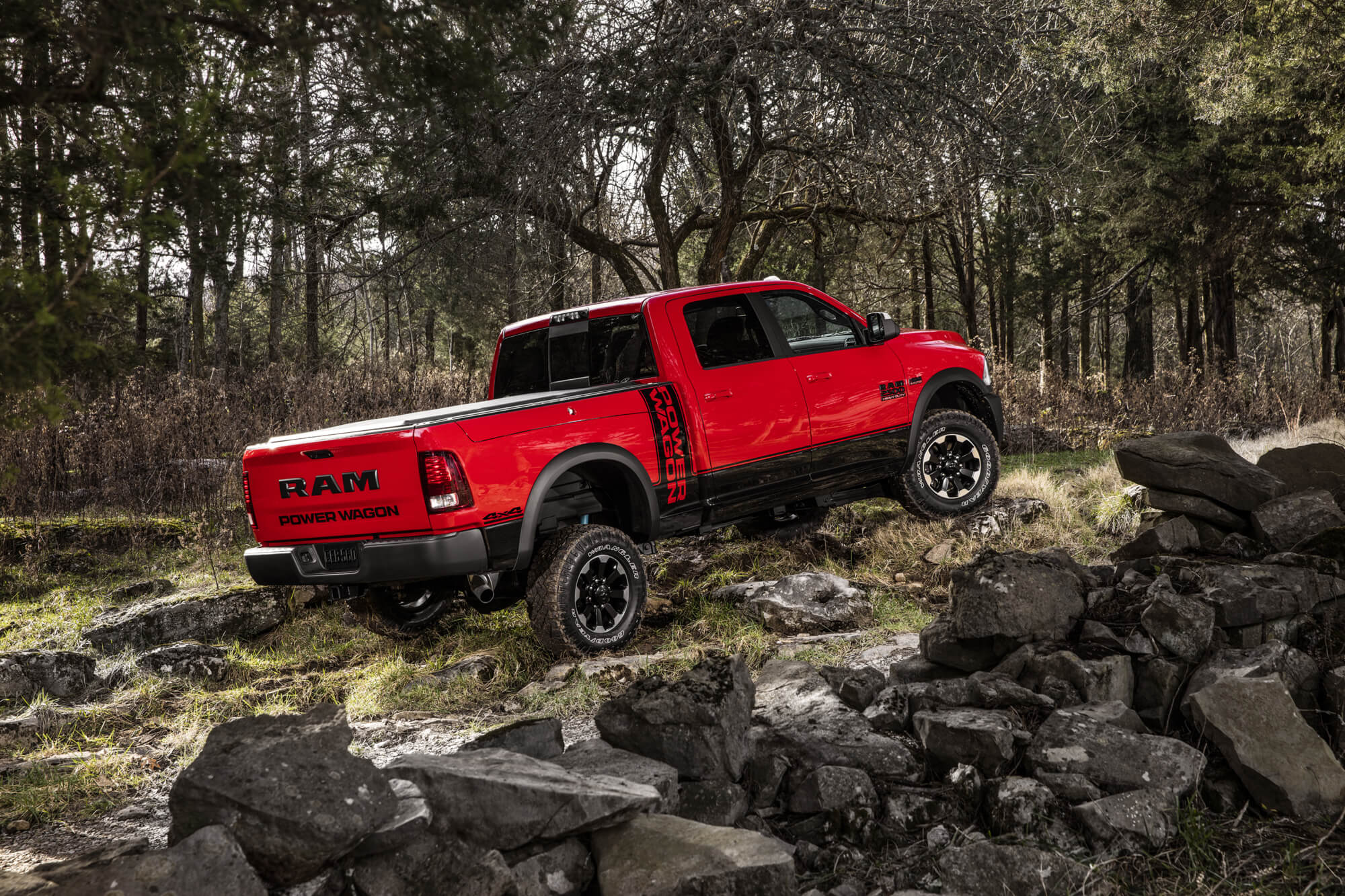
The late 1970s may have been a bad time for horsepower and torque, but the disco decade produced some incredibly wild special edition trucks. Some of these sticker packages were a little strange and more than a few could be classified as downright lame, but, a handful of them qualify as awesome. And Dodge was the undisputed king of wild-striped perfection. Dodge’s lineup of “Adult Toys” included the famously quick Lil’ Red Express Truck, the spooky-sounding Warlock, and the totally groovy Street Van.
But the one that four-wheel drive fans really gravitated toward was the Macho Power Wagon. The Macho was a regular 1/2-ton W150 Dodge pickup dipped in bright colors and wearing some bold black and colorful striped graphics on the hood, tailgate and, bedsides. Of course, running horizontally along the front edge of the bedsides were the words “Power Wagon”. Most had a colored body roll bar in the bed and contrasting color wagon-type steel wheels. It looked badass. And the most desirable ones came with a big block 440 V8 under that flat black hood. A red Macho Power Wagon long bed famously starred in the television series Simon & Simon that ran from 1981-89. Every kid that watched the show dreamed of one day rocking a Macho of their own.
Ram has finally made that childhood fantasy a reality. For 2017, the truck specialists have created a retro version of the Power Wagon complete with “Macho” graphics just like the ones from the 1970s. And yeah, we completely dig it. Just in case you don’t, those graphics can be removed. It’s been three years since we slid behind the wheel of a Power Wagon—so it’s certainly time to revisit Ram’s most capable rig. The $62,610 beast arrived loaded with optional equipment and ready to get dirty. We pressed the truck into service on our challenging 300-mile test loop, incorporating a half day playing on the trails at Hungry Valley SVRA in Gorman, CA. Let’s find out if the new Macho ‘Wagon has the chops off-road.
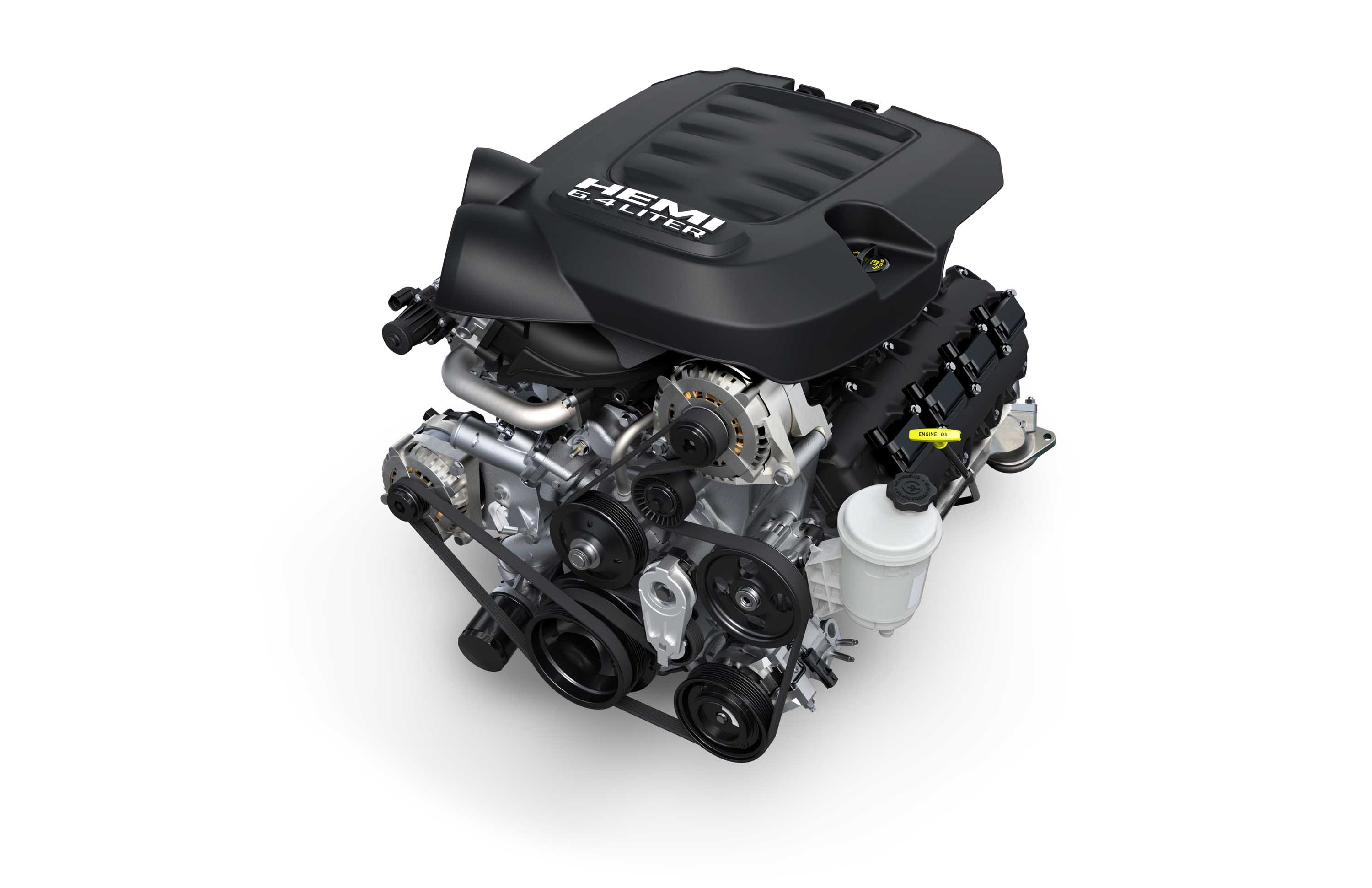
The Hardware
The Power Wagon may be wearing some new clothes, but under those flashy new graphics, the truck is essentially the same rig it’s been since 2014. And that’s not a bad thing. FCA’s healthy 6.4L V8 is the only engine choice on the Power Wagon and here it generates 410 horsepower at 5,600 rpm and 429 lb-ft of torque at 4,000 rpm. It comes paired to a six-speed automatic with a 3.23:1 first gear and a63:1 overdrive in sixth gear. The part-time Borg Warner 44-07 two-speed transfer case delivers a low range ratio of 2.64:1. But unlike just about any new 4X4, it takes actual muscle to move a 4WD lever mounted on the floor. Perfect for the Power Wagon.
Those big solid axles slung underneath the Power Wagon are exactly the type of equipment 4WD enthusiasts really appreciate. The front is a 9.25-inch AAM axle with 1.38-inch axle shafts, while the rear is a 11.5-inch AAM with 1.5-inch shafts. Both axles house electric locking differentials for true four-wheel drive and are loaded with 4.10 gears—that means this truck has a crawl ratio of 35:1.
The Power Wagon rides on coil springs at each corner that are two inches taller than stock and accompanied by Bilstein shocks. At the front, a three-link axle locating arrangement is unique to the Power Wagon. Engineers developed a smart joint at the upper axle mount called Ram Articulink that twists generously to increase the front axle’s articulation. Ram engineers say this link accounts for a fifteen to twenty percent improvement in flex over a regular 4WD 2500.
The five-link rear suspension is largely the same as the one used in conventional 2500s, except for a third shock mounted on the top of the differential to help control axle wrap. The key to the suspension’s excellent articulation comes from the electronic disconnecting front stabilizer bar. The bar can be disconnected in 4WD in both high or low range and reconnects above 18 mph. Ram says the Power Wagon returns an RTI of 423 on a 20-degree ramp with that swaybar attached, and 510 with it disconnected.
At our scales, the Power Wagon weighed 7,340 lbs. That’s only 260 lbs. heavier than the last gas-engine Super Duty we last tested. Our Ram had a payload of 1,100 lbs. and could tow a 10,030-lb. trailer. As a work-only heavy duty truck, those numbers are a littlelight. That V8 gas-powered Super Duty could carry more than double the Power Wagon’s payload and could tow 12,000 lbs.
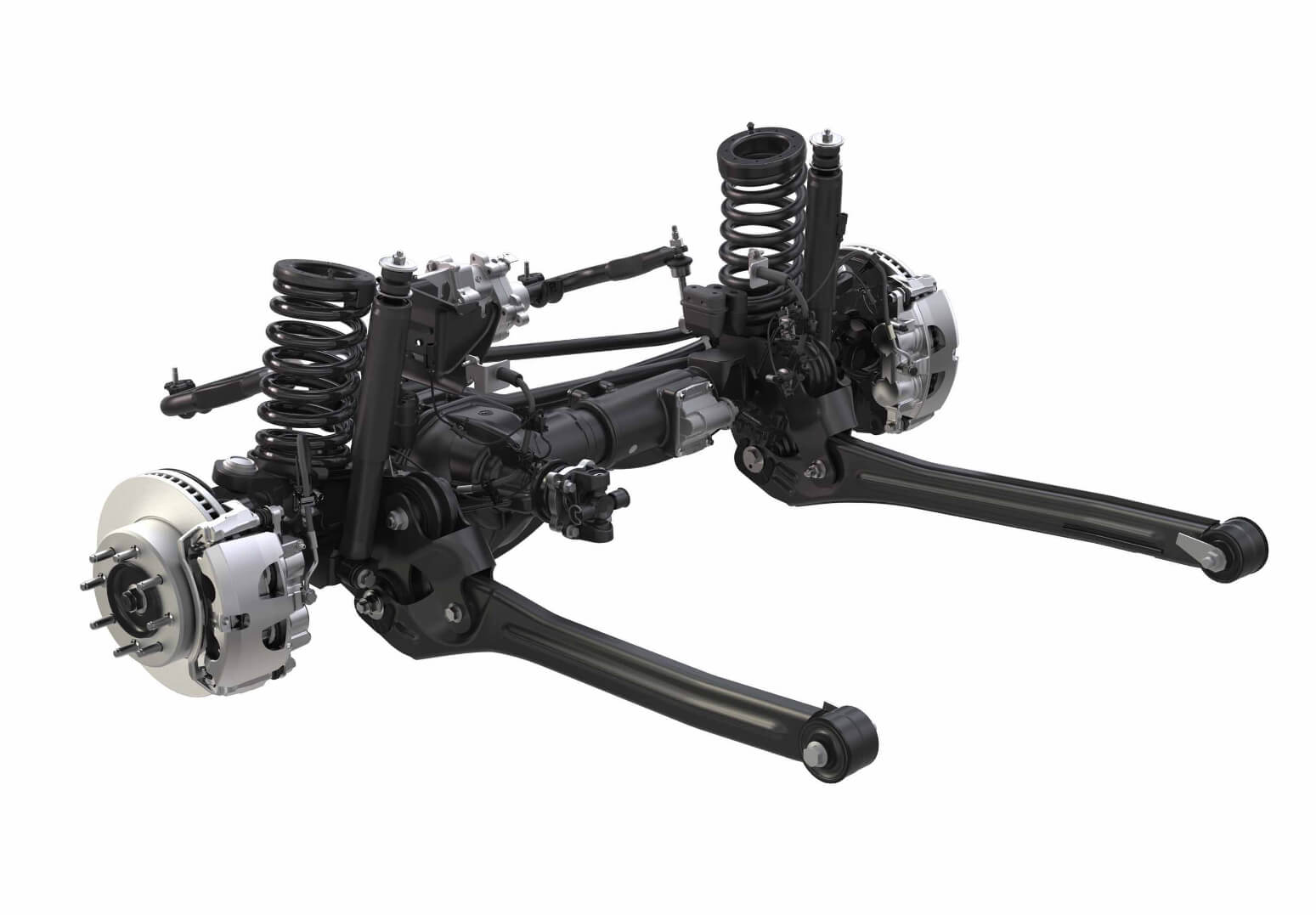
The AAM 9.25-inch solid axle is loaded with 4.10:1 gears and a locking differential. The three-link coil-sprung suspension flexes far better than a stock Ram 3/4-ton setup thanks to the Articulink (which allows more twist) and of course the electronic sway bar disconnect system.
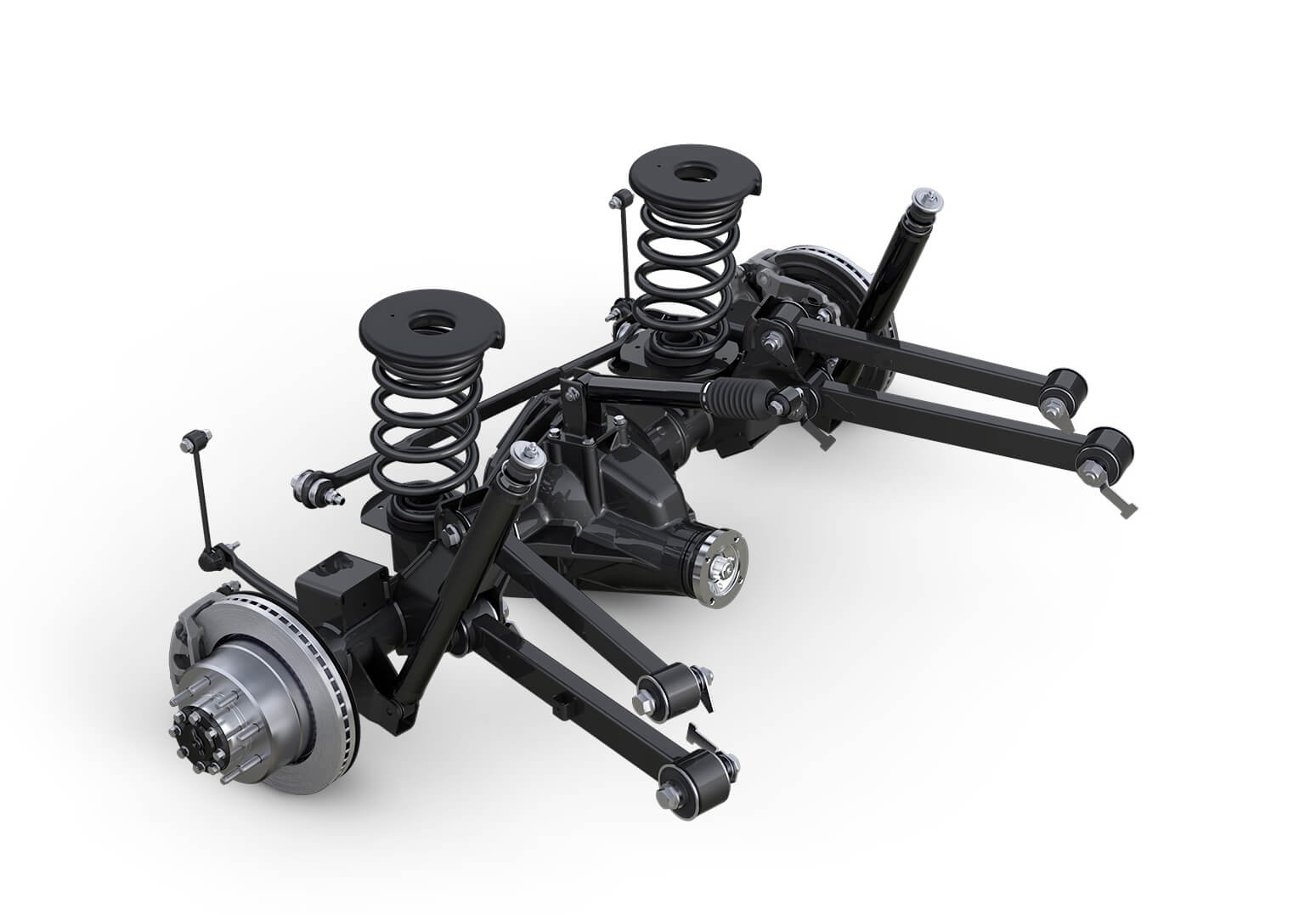
On the Street
No other truck we’ve tested recently has received more positive attention than this Power Wagon. And that includes the Raptor. People stare, give us a casual nod or even a big thumbs up. Here, on the jaded streets of Los Angeles, everyone seems to get this truck. The Power Wagon is universally cool.
Climb aboard and the layout is certainly familiar, though the interior has been updated since the last time we spent time in a Power Wagon. Ours was wearing the $4,995 Power Wagon 22P option package which includes a long list of luxury and tech equipment. We particularly liked the soft heated and cooled leather seats and the easy-to-use 8.4-inch touchscreen. Since this is such a tall truck, we were happy to have the front and rear Park Sense system, which lets you place the truck easily in tight parking spots. Our rig also had the $1,295 Rambox bedsides, a removable $545 trifold tonneau cover, $245 remote start capability, $195 power adjustable pedals and more. Yes, it was loaded.
The 6.4L V8 hasn’t changed since it was launched for the 2014 model year in heavy-duty Rams, and that’s just fine. It still feels strong. There’s plenty of power around town when you dig into that throttle. Only Chevy’s 6.2L V8 makes more power and it’s only ten more horsepower. But man, for such a flashy truck that proclaims “power” in huge letters everywhere, it should sound a little more aggressive.
The exhaust might be muffled but what you do hear is some hum from the 33-inch Goodyears. They are certainly not mud-tire loud but the tires do provide a little background noise. Oddly, our truck’s brakes felt soft compared to other Rams we’ve tested. That might be an anomaly with this truck. If not, we’d consider swapping to a more aggressive pad.
Compared to other heavy-duty trucks, the Power Wagon is fairly cush. The suspension is easily the softest amongst the big truck crowd and the ride is pleasant on any pavement. But, that somewhat squishy suspension means that the steering doesn’t feel quite as crisp as the latest heavy-duty trucks. And oddly this truck has a really wide turning circle of 47.7 feet. That’s four feet wider than a standard Crew Cab short bed 4WD Ram 2500. The Power Wagon has fairly heavy steering at low speeds too, so that maneuver takes some effort. As one might expect from a tall, soft truck, if you drive the Power Wagon aggressively through a set of switchbacks, there’s some body roll.
Several freeways around LA have just the right bump frequency to create a little buck in the Power Wagon’s chassis. It’s no worse than other heavy-duty trucks of the same size. At 70 mph, our truck revved right at 1,900 rpm and the Ram was relatively quiet on the highway. On the steepest hills, the Power Wagon was eager to downshift out of overdrive,which brought the revs up to 2,400 rpm. This is one truck that could benefit from an 8-, 9- or 10-speed transmission. Not surprisingly, the Power Wagon’s fuel economy was poor. We averaged just 12.4 mpg. That’s a little worse than the 13.6 mpg we recorded in a 6.2L Ford Super Duty. A Cummins option would certainly improve that number. The last one we tested returned 17.1 mpg. However, Ram engineers maintain that offering the heavy diesel would compromise the truck’s off-road capability. Boo.
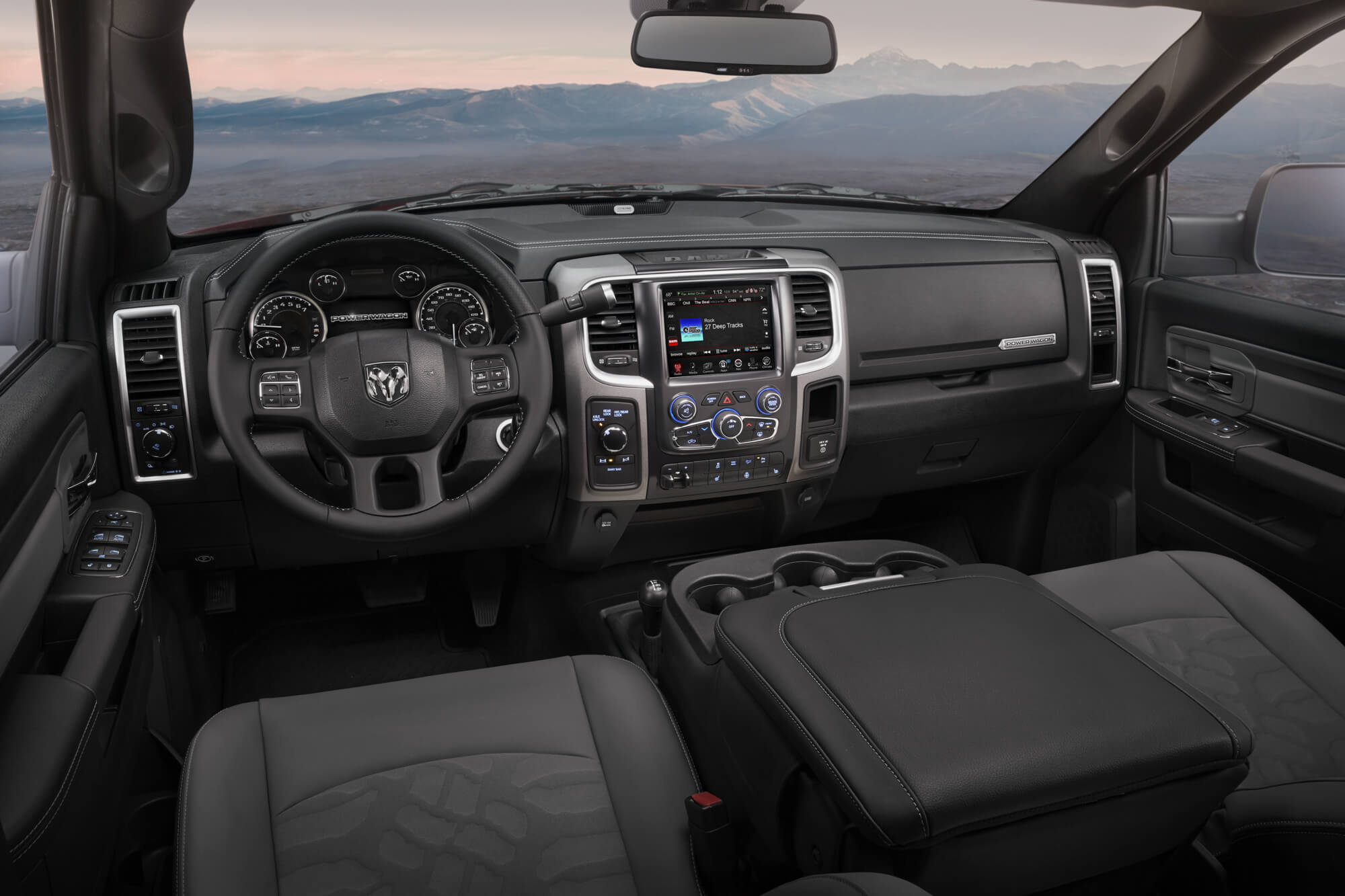
On the Trail
Maybe it’s the big Warn winch sitting up front, or it could be the locking differentials in each axle, or even the swaybar disconnect system (or all three), but the Power Wagon has the off-road tools to instill confidence in the driver like no other 4X4. As soon as we set a tire into the dirt, we unlocked that front swaybar—and what a difference it makes. Not only is the ride quality over higher-speed terrain improved dramatically but the Power Wagon finds traction where it would normally spin a tire. And speaking of speed, the ‘Wagon was much better suited to our “whoops” dirt road than the last Cummins Ram we tested. We maintained around 25 mph before the front would pogo. That’s a bit better than the gas-powered Super Duty we last tested and about the same at the last diesel Z71 Chevy Silverado HD. The difference between the Ram and the Ford is in the solidity of the frame. Near its peak speed, we remember the Super Duty felt rock solid with no chassis flex or cab quiver thanks to that new frame. The Ram, on the other hand, felt looser and we could hear the doors rattling slightly on the worst impacts.
As we transitioned to the sandy dry washes, we realized this ‘Wagon isn’t happy in 2WD. Despite that third shock sitting on top of the axle, we experienced some rear wheel hop. Shifting to 4WD mitigated the hop somewhat, but this is not a truck that feels athletic in the sand.
Peek underneath the bodywork and the undercarriage is protected withshields and protective bars from the transfer case all the way back to the rear axle. There’s protection, yes, but you can’t just drag the underbody of this rig over the rocks without the possibility of some damage, because despite the heroic equipment on board, this is still a factory-stock 4X4.
The Power Wagon should have massive ground clearance but the reality is, those big differentials hang low. We measured a respectable 9.25-inches at the front diff but just 8.25-inches at the rear. When we pushed the 4WD lever forward into low and began to crawl some rocky terrain, we noticed that rear axle was easy to scrape. And twice it even halted our progress when we tagged a rock. Of course, we were attempting some moves that we wouldn’t think about in any other ¾-ton pickup. Once we locked the diffs and picked a new line in that rock garden, the big Ram rolled right through. In fact, locking both diffs made most of the hills we attempted in the park easy. The only challenge came once we completed the climb. The chassis protection (which hangs a bit lower than the rest of the components in the middle) touched down as we crested the steepest hill. Luckily, we adjusted our line to a less extreme breakover angle and only scraped the bars as we crawled over, instead of getting hung up. The thing we learned from all this is that we wouldn’t truly be happy four-wheeling the Power Wagon until we replaced those 285/70R17 Goodyear Duratrac tires with ones that were at least one size larger. The stock 33-inch tires would be magic on any other truck, but here they simply don’t let you explore the full potential of this incredible chassis.
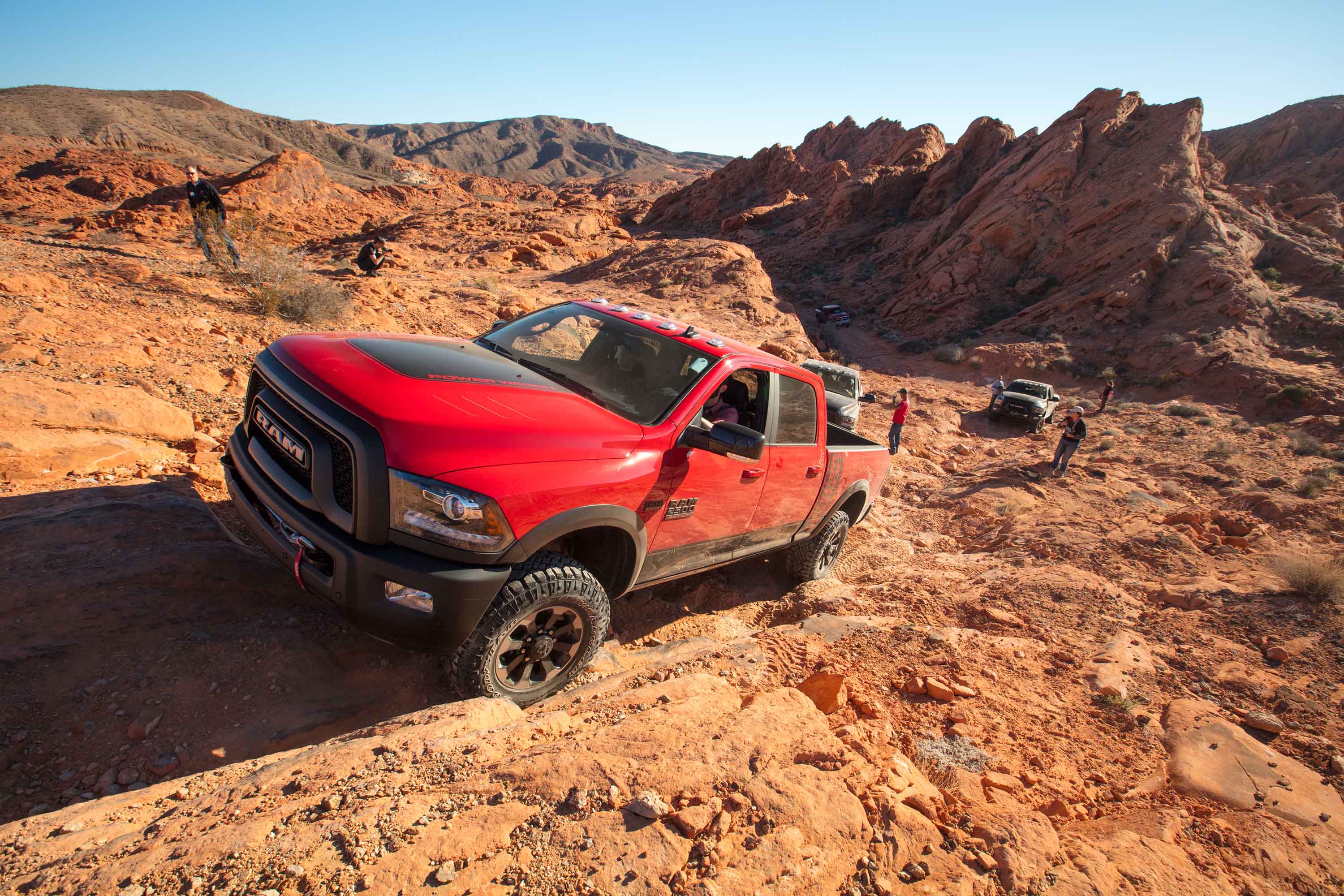
The Bottom Line
The Power Wagon is one capable, cool-looking rig. We pushed it over and through terrain that we don’t usually take stock 4X4s, which made us realize that the small(ish) tires are the only thing holding it back from more extreme terrain. After all, we took the Raptor on many of the same trails and experienced no ground clearance limitations. It might take a little fender trimming or a set of mild front coil spring spacers (according to some forums we checked out) to get there, but the extra clearance would probably make the ‘Wagon a far more capable rig.



2